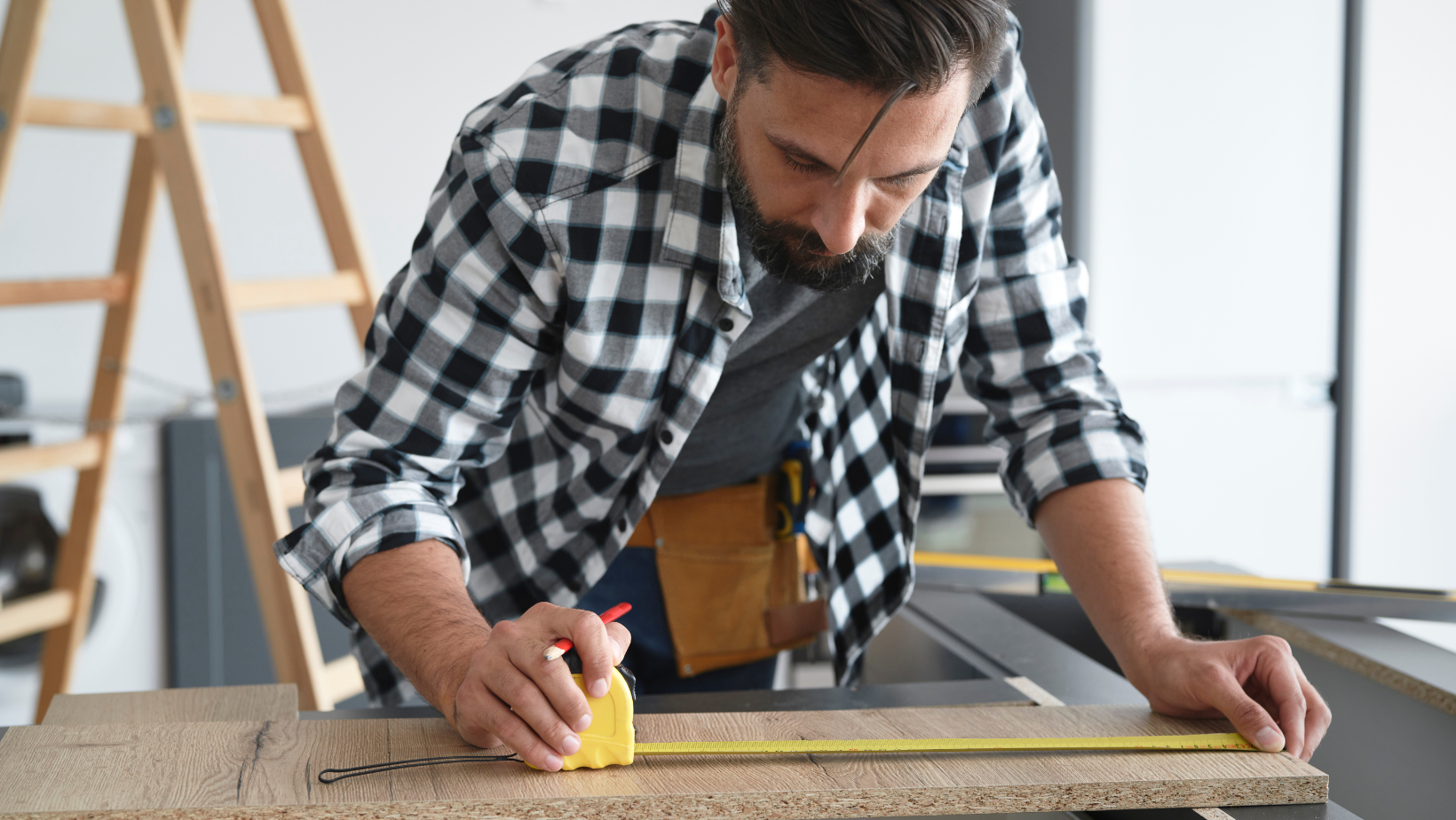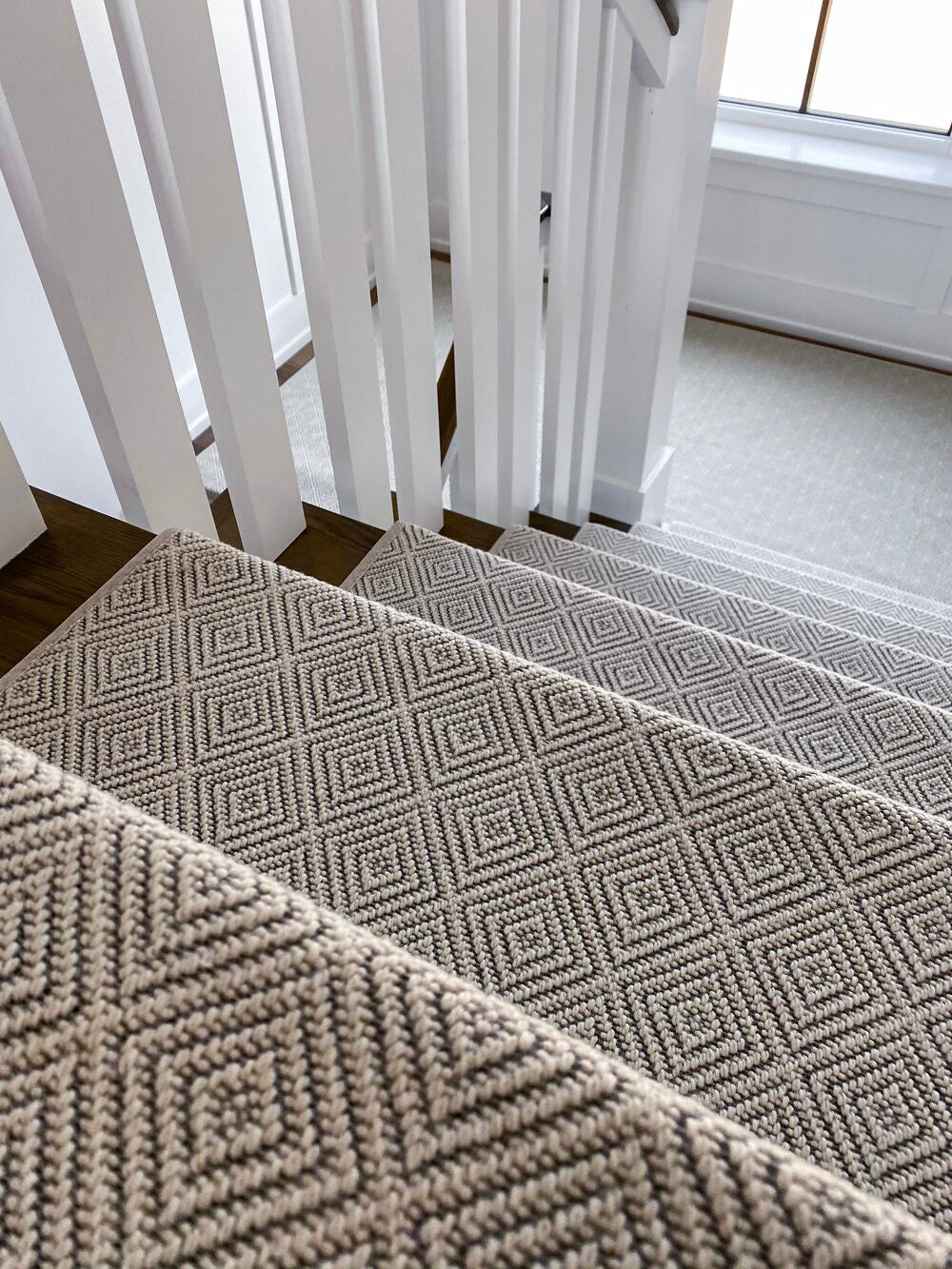Installing carpet stair treads or updating your staircase?
Here's how to measure stair steps: record the tread depth, riser height, stair width, and total rise and run using a tape measure and level.
These measurements ensure a safe fit, proper alignment, and a clean finish for any stair covering or renovation project.
In this guide, you'll learn how to take each measurement accurately, avoid common pitfalls, and meet building code standards.
Whether you're a DIY homeowner or prepping for a custom order, we break it down step-by-step.
By the end, you'll have the measurements you need to confidently upgrade your stairs with carpet stair treads or new materials.
Understanding Stair Treads and Risers
Before grabbing your tape measure, it helps to understand the parts of a stair step.
-
Tread: The horizontal surface you walk on.
-
Riser: The vertical piece between each tread.
The stair treads and risers dimensions are crucial for safety and comfort.
If one step is higher or deeper than another, even by a small amount, it can throw off the walking rhythm—especially for children, pets, or older adults.
That’s why consistent measurements are key.
Every riser should be the same height, and every tread should be the same depth.
In many areas, building codes even specify maximum variances (often less than 3/8 of an inch).
For example, if one riser is 7 inches and the next is 7.5 inches, that difference can feel awkward—and potentially cause someone to trip.
Also, deeper treads mean more room for your feet, which makes stairs feel more secure.
Short treads, on the other hand, can force you to adjust your step mid-climb.
So, when we talk about how to measure stair steps, it’s not just about numbers—it’s about making the stairs safer, easier, and more comfortable to use.
What You Need Before Measuring
To measure accurately, you’ll need:
-
A tape measure (preferably one that locks in place)
-
A carpenter’s square (to check right angles)
-
A level (to confirm the stairs are even)
-
A notebook or phone to record each measurement
Optional tools include a laser measurer or framing square for added precision, especially if you’re building or remodeling an entire staircase.
Once you’ve got everything ready, it’s time to walk through the actual steps.
Step-by-Step: How to Measure Your Stair Steps
Measuring your stairs doesn't have to be complicated.
Follow these clear steps to get accurate, consistent results every time.
1. Measure the Total Rise
This is the vertical distance between the finished lower floor and the finished upper floor.
Use your tape measure and place it at the base floor, measuring up to the top floor.
Be sure you're measuring from finished floor to finished floor—not subfloor to drywall.
This helps determine how many risers are needed, and how high each one should be.
2. Measure the Total Run
The total run is the full horizontal distance that the staircase spans from the front of the first step to the last.
This is important when calculating how far the staircase will extend into the room, especially if you're working with limited space.
3. Count the Steps
This includes all treads and risers.
A simple rule of thumb: the number of risers is always one more than the number of treads.
For example, 12 risers means you’ll have 11 treads.
4. Measure Each Riser and Tread
Use your tape measure and level to get the exact height of each riser and the depth of each tread.
In older homes, these can vary, so it’s important to measure every step individually.
Even if you're planning to install new treads over existing stairs, you need to know the original stair treads and risers dimensions to ensure the new ones will fit properly.
How to Measure Stair Tread Depth Accurately
One of the most common questions we get is how to measure stair tread depth correctly.
This is more than just a cosmetic measurement—it directly affects how safe the staircase feels.
The deeper the tread, the more space your foot has to land safely.
To measure:
-
Place your measuring tape at the outer edge (nose) of the step.
-
Extend the tape to the back of the tread, where it meets the riser above.
-
Write down that number.
-
Repeat for each stair.
Make sure to use a level on top of the tread to confirm it’s flat.
If the tread slants or has wear, it could affect your measurements.
The tread depth typically falls between 10 to 11 inches, but can vary.
When using stair tread covers, like luxury carpet stair treads, knowing how to measure stair tread depth with accuracy ensures a tight and secure fit.
If treads are uneven in depth, even by half an inch, it can cause users to misstep.
That’s why precision is essential—not just for aesthetics, but for daily safety.
How to Measure Stair Width the Right Way
Next up: stair width.
This tells you how wide each step is across its horizontal plane.
To measure:
-
Extend your tape from one side of the stair to the other—typically wall-to-wall or from one handrail to another.
-
If the stairs are open on one side, measure from the wall to the outer edge.
Standard stair width for residential homes is often 36 inches, but that can vary.
Always check local code requirements if building from scratch.
If you're installing stair treads, stair width will help you determine which tread sizes to order—and whether you'll need custom dimensions.
Also, check for obstructions.
Newel posts, trim, or uneven walls can affect usable space.
How to Check Stair Headroom
Headroom measures the vertical clearance between a stair tread and the ceiling above it.
-
Place a level on the edge of the tread.
-
Measure straight up to the lowest point above (such as a ceiling or bulkhead).
-
Make sure this height is at least 6 feet 8 inches, as required by most building codes.
Insufficient headroom can lead to discomfort or even injury—especially if taller people use the stairs regularly.
Pro Tips for Getting Measurements Right
-
Always Double-Check: Even small errors in measuring can lead to costly delays during installation. Measure twice.
-
Use a Carpenter’s Square: This helps confirm that the angle between riser and tread is a clean 90 degrees.
-
Watch for Settling: In older homes, stairs may have settled, causing slight tilts or dips. Use a level to check each step.
-
Keep Detailed Notes: Track every measurement. This becomes crucial if you’re ordering custom stair treads or sending specs to a contractor.
-
Account for Materials: If you’re adding carpet stair treads or wood overlays, include the thickness of those materials in your final measurements.
What Happens If You Don’t Measure Accurately?
A lot, unfortunately.
-
Treads won’t fit correctly—leaving gaps or overhangs.
-
Risers might be uneven—creating tripping hazards.
-
The overall look of your staircase will suffer, especially in an open floor plan.
And if you're using a product like Oak Valley’s peel-and-stick luxury stair treads, a small mismeasurement can lead to poor adhesion or awkward alignment.
That’s why mastering how to measure stair steps is such a valuable skill.
It’s a small investment of time that saves money, prevents mistakes, and ensures your project looks as polished as possible.
Real-Life Application: Why These Measurements Matter
Let’s say you're adding wool carpet stair treads in a high-traffic area with pets and kids.
These treads need to align perfectly with each step—not just for appearance, but for slip resistance and safety.
If one tread is too short or misaligned, it creates a risk.
That’s why understanding stair treads and risers dimensions in advance ensures the treads cover the right amount of space and secure properly.
And because Oak Valley Designs offers custom-sized stair treads, these measurements help ensure your order is exactly right the first time—no need for cutting, trimming, or guessing.
Steps To Success
Knowing how to measure stair steps is more than just numbers on a tape—it's the foundation of a safe, secure, and beautiful staircase.
From understanding stair treads and risers dimensions to learning how to measure stair tread depth accurately, every step matters.
Whether you're building new stairs or simply updating them with high-end stair treads, the right measurements ensure everything fits—and functions—just right.
Contact Us Today?
Oak Valley Designs offers custom solutions that blend style, safety, and comfort.
-
Website: https://oakvalleydesigns.com/
-
Phone: 706.331.0315
-
Email: info@oakvalleydesigns.com
-
Address: 30 River Ct SW Bldg E Cartersville, Ga 30120




